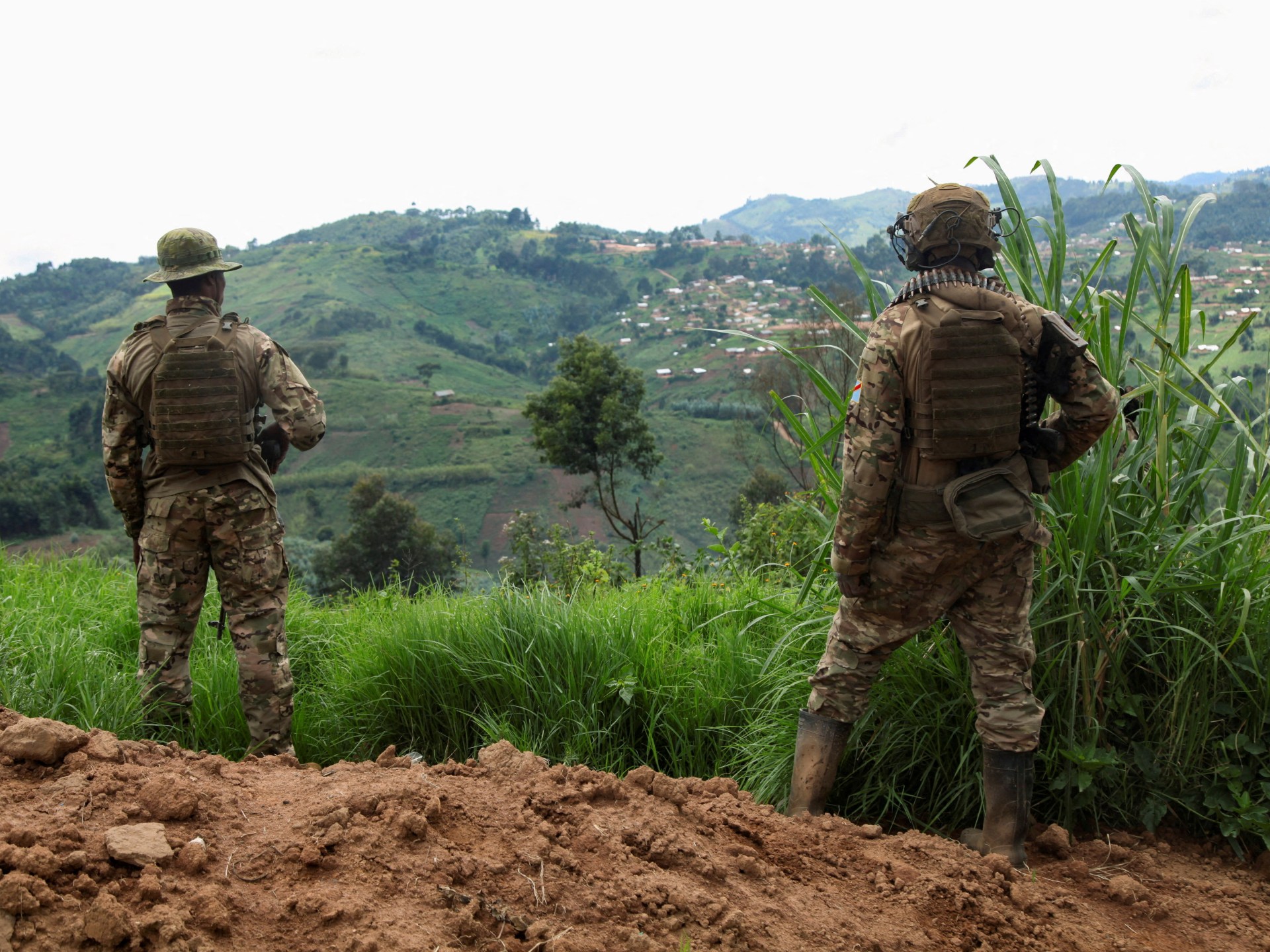Palestinians in Gaza desperate to travel abroad for life-saving treatment
 19 January 2025
19 January 2025
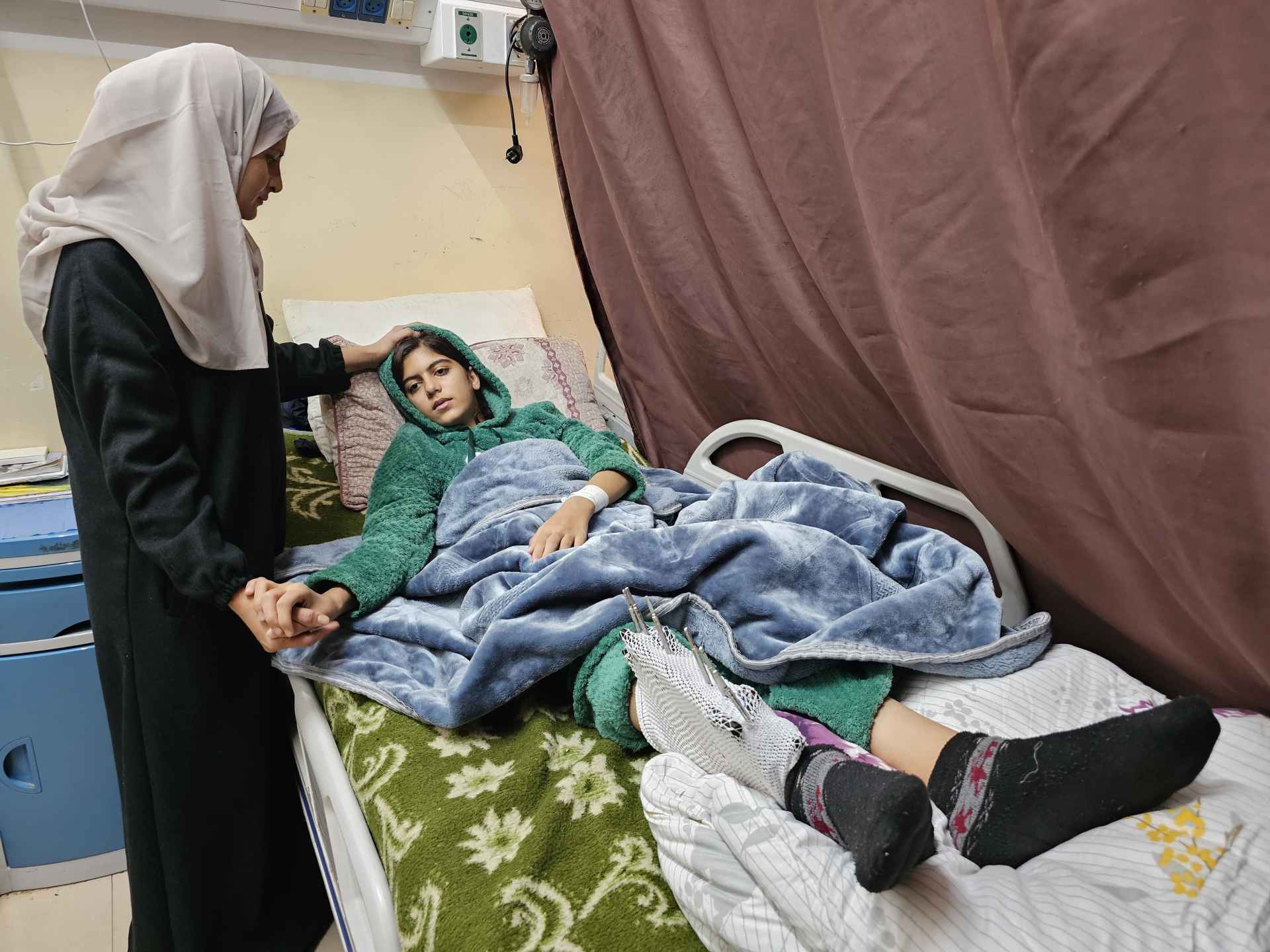

Khan Younis and Rafah, Gaza Strip, Palestine – In a small apartment in Khan Younis, surrounded by a war-torn landscape as far as the eyes can see, Abeer al-Awady counts the minutes until the much-anticipated ceasefire.
Her daughter Hanaa’s life depends on it.
The 15-year-old lets out a piercing cry whenever Abeer lifts the blanket shielding her face. Even the faintest glimmer of light triggers excruciating pain in the teenager’s sensitive, swollen eyes, leaving Abeer with no choice but to heed her daughter’s agonised pleas to be covered again.
Beneath the blanket lies a face marked by the relentless toll of cancer. A red mass protrudes from her left eye, her head appears shrunken, and her frail arms barely move. Her weakened voice and constant cries tell of the pain she’s endured since her diagnosis three months ago.
Abeer prays that the Rafah crossing, which Gaza shares with Egypt and has been sealed shut by Israel since its ground operation in the southernmost region of the enclave in May, opens as soon as the ceasefire comes into effect early Sunday. “I don’t know how much longer Hanaa will survive,” she said.
Advertisement
For thousands of wounded Palestinians in Gaza and patients like Hanaa, the ceasefire agreed to by the Israeli cabinet on Saturday after much political tension, is more than a diplomatic milestone; it’s a matter of survival. The Rafah crossing is expected to open as part of the deal, allowing Palestinians in Gaza to leave for medical treatment.
The territory’s healthcare sector has been ravaged by the war, depleting it of human resources, equipment and infrastructure, and medical staff who have braved Israeli attacks and are left with little to offer their patients.
“There is nothing that Gaza’s healthcare sector could offer these critical conditions: no medication, no specialists, no operations or procedures, no proper equipment,” Dr Muhammad Abu Salmiya, director of al-Shifa Medical Complex and head of the Department of Treatment Abroad, told Al Jazeera, adding that for many the only chance of survival is treatment abroad.
The ceasefire is set to ease the exit of Gaza Palestinians in need of medical treatment through the Rafah border crossing. “The details of where patients will go for treatment are still not clear. The 5,300 Gazans who left for treatment since October 2023 went to Arab and European nations, as well as the US. It is still not clear the countries to which these cases will go,” noted Abu Salmiya.

Death sentence
For Abeer, who also has two sons, the Rafah crossing is their family’s only hope to hold onto her Hanaa. “Hanaa diagnosis’ felt like a death sentence for our family,” said Abeer, her voice breaking as tears streamed down her face. “But to watch her condition worsen daily, with nothing that we or anyone in Gaza can offer, is another level of torment.”
Advertisement
The family’s ordeal began when Hanaa’s eyes swelled, prompting a visit to an eye doctor who referred her immediately to Nasser Hospital in Khan Younis. There, tests confirmed the devastating news: Hanaa had cancer, with multiple tumours in her head.
Abeer recounted how her once-energetic daughter, despite being born with cerebral atrophy and having a speech impairment, had thrived with sharp hearing, clear vision, and a zest for life. But since her diagnosis, Hanaa has lost her sight completely, and her hearing is rapidly deteriorating. A massive tumour in her throat has also meant she’s unable to eat, and she now relies on a feeding tube connected to her stomach.
For three months, Hanaa has received no cancer treatment due to the lack of medical supplies in Gaza. “All she gets are painkillers to help her sleep,” Abeer said. “If it weren’t for this war and the blockade, Hanaa could have started treatment and recovered. Instead, her condition has worsened, robbing her of her senses and leaving her motionless.”
Patients dying every day
According to Abu Salmiya, there are 20,000 patients and wounded Palestinians in Gaza in need of treatment, of whom 12,000 are in dire conditions. “Nearly 6,000 people wounded by the war need urgent treatment in facilities abroad. These include roughly 4,000 amputees, and more than 2,000 cases sustaining serious injuries to their backbone and their spinal cord, resulting in crippling and paralysis,” he said.
In a speech delivered at a United Nations Security Council meeting on January 3, Dr Rik Peeperkorn, World Health Organization (WHO) representative for the West Bank and Gaza, said more than a quarter of the 105,000 civilians injured during the 15-month Israeli pounding of Gaza face “life-changing injuries”. Describing hospitals as “battlegrounds”, UN High Commissioner for Human Rights Volker Turk quoted WHO figures of 654 attacks on healthcare facilities, leading to 886 deaths and 1,349 injuries.
Advertisement
According to the organisation, more than 1,000 healthcare workers have been killed since October 2023, adding further strain to an overstretched healthcare system, in which only 16 out of Gaza’s 36 hospitals are partially operational, and as few as 1,800 beds are available.
“We’re losing patients with conditions that we could’ve easily handled if not for the war. We’ve lost nearly 25 percent of our dialysis patients. Infants with heart conditions are dying on a daily basis in incubators because we cannot operate on them. As many as 20 patients of curable illnesses die every day in front of helpless staff,” noted Abu Salmiya.
For those critical conditions, exiting the territory has been “a tedious and futile process”, especially since the closure of the Rafah crossing, added the official. “Israel’s restrictions at the Karem Abu Salem [Kerem Shalom] border crossing [between Gaza and Israel] meant many weren’t allowed to leave although they were given the green light to. For instance, infants would be given permission to go, but without their mothers,” he explained. Only 490 medical conditions were allowed to leave the territories since May. “Out of 12,000 critical conditions, 490 is nothing,” commented Abu Salmiya.
According to Abu Salmiya, a ceasefire must be accompanied by an influx of resources and an ease of departure for patients going out. “We urgently need plastic and burn surgeons, bone restoration consultants, as well as consultants in neurosurgery, vascular surgery, pediatric surgery, thoracic surgery, maxillofacial surgery and cardiac surgery,” he said.
Advertisement
He also called on the WHO, the Palestinian Authority and Egypt to “ensure the safe and timely departure of medical cases to be hospitalised around the world, bearing in mind that most have lost their travel documents amidst the war and displacement,” pleaded the official.

Desperate hopes in Nasser Hospital
At Khan Younis’s Nasser Hospital, 14-year-old Raghd al-Farra lies in a hospital bed, barely able to speak. Her dream of surviving her injuries and living a normal life depends on receiving treatment outside Gaza.
Raghd was critically injured on July 22, 2024, when an Israeli air strike hit her family’s home. “The pain never ends,” she said, her words slow and strained. Raghd has spent most of the past six months in the hospital, moving between departments for nerve, bone, and abdominal care.
Her mother, Shadia al-Farra, recounted the day their home was bombed. Shadia and three of her daughters, including Raghd, were on the upper floor, while her husband and their youngest child were downstairs. “The walls collapsed around us,” she said. The strike also destroyed a neighbouring home, killing its occupants.
Raghd’s injuries were severe. Doctors diagnosed her with two spinal fractures, complex fractures in her right leg, and massive internal bleeding. She underwent emergency surgery to remove her spleen and parts of her lungs, but her condition remains critical. “She still has severe fibrosis and other abdominal complications that require treatment unavailable in Gaza,” her mother said.
Advertisement
In late August, doctors at Nasser Hospital prepared a file for Raghd’s transfer abroad, submitting it to Israeli authorities through WHO in mid-September. However, no approval has been granted, and Raghd’s condition continues to decline. She struggles to breathe, move, or eat, and recently had her tonsils removed to address further complications.
Shadia fears her daughter’s time is running out. “If Rafah doesn’t open soon, Raghd won’t survive. Her life depends on specialised care that Gaza cannot provide,” she said.
The stakes are high for patients and their families, who have endured immense suffering during the 15-month war. “Our children are dying in front of our eyes,” Shadia said. “We are powerless because our medical system is overwhelmed. The ceasefire and Rafah’s reopening are our only hope.”
This piece was published in collaboration with Egab.
Related News
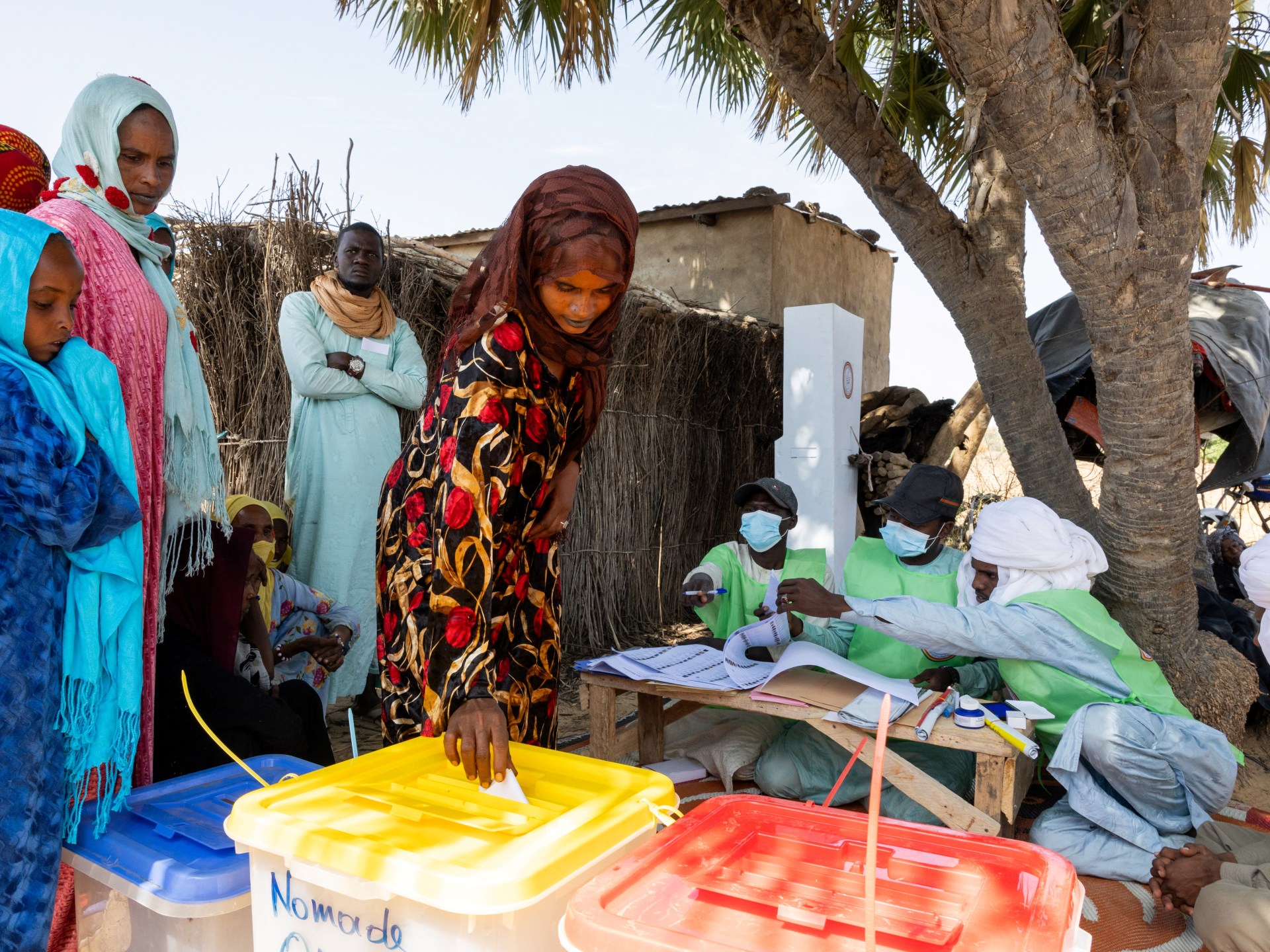
Voting under way in Chad’s contentious parliamentary election
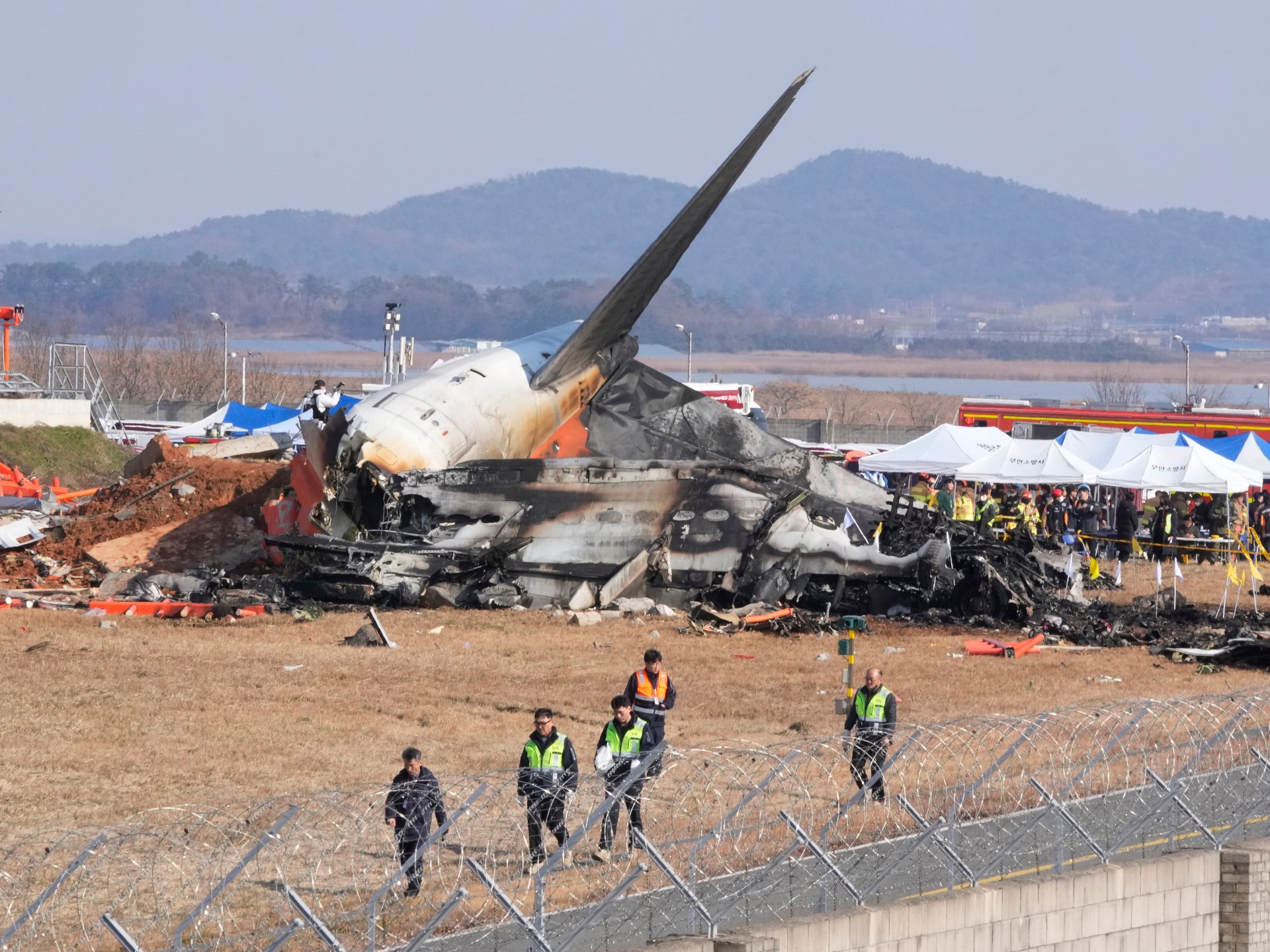
Photos: Passenger plane crashes at South Korean airport, killing 120
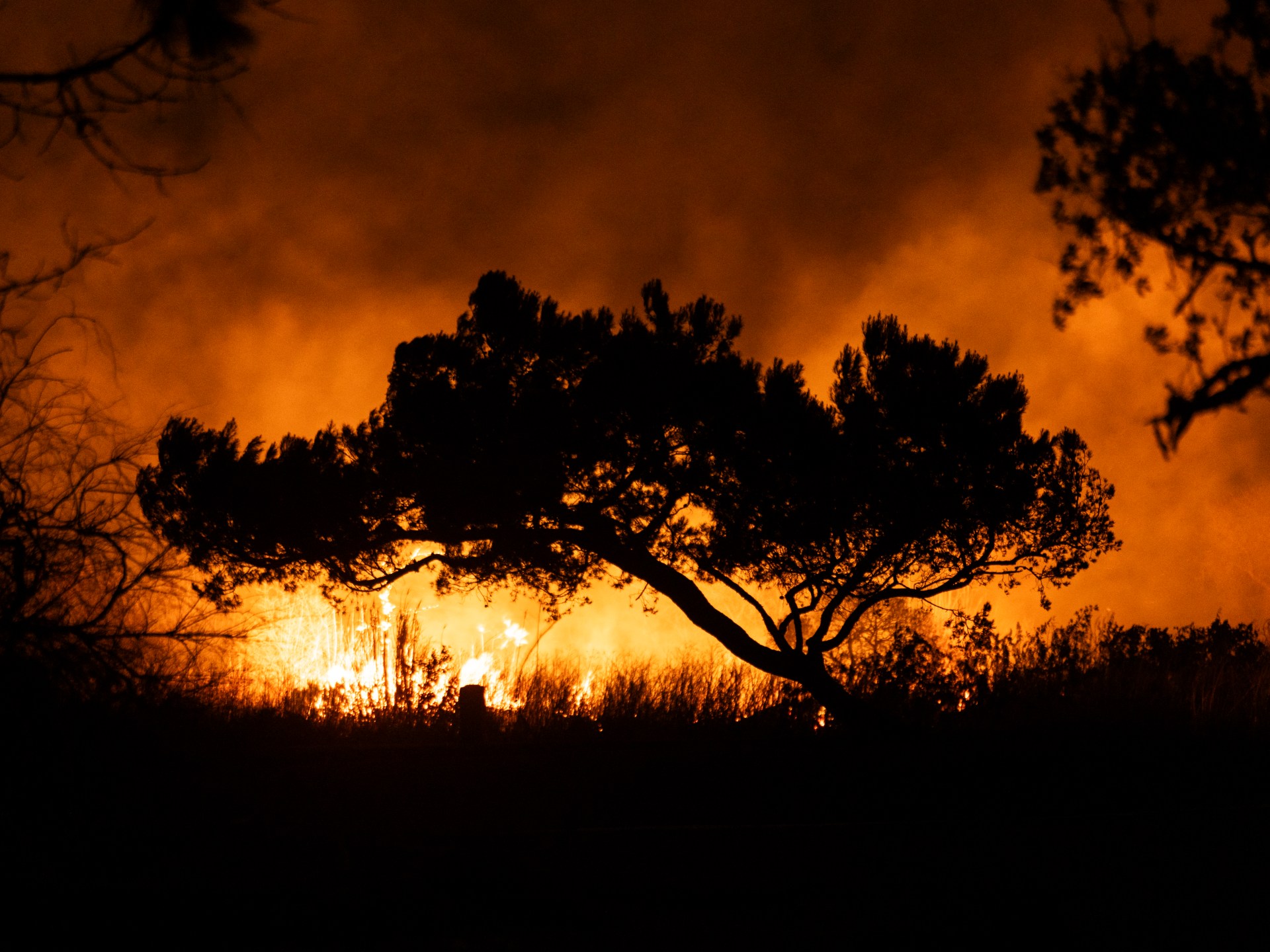
What to know about the LA Fire Department’s budget
